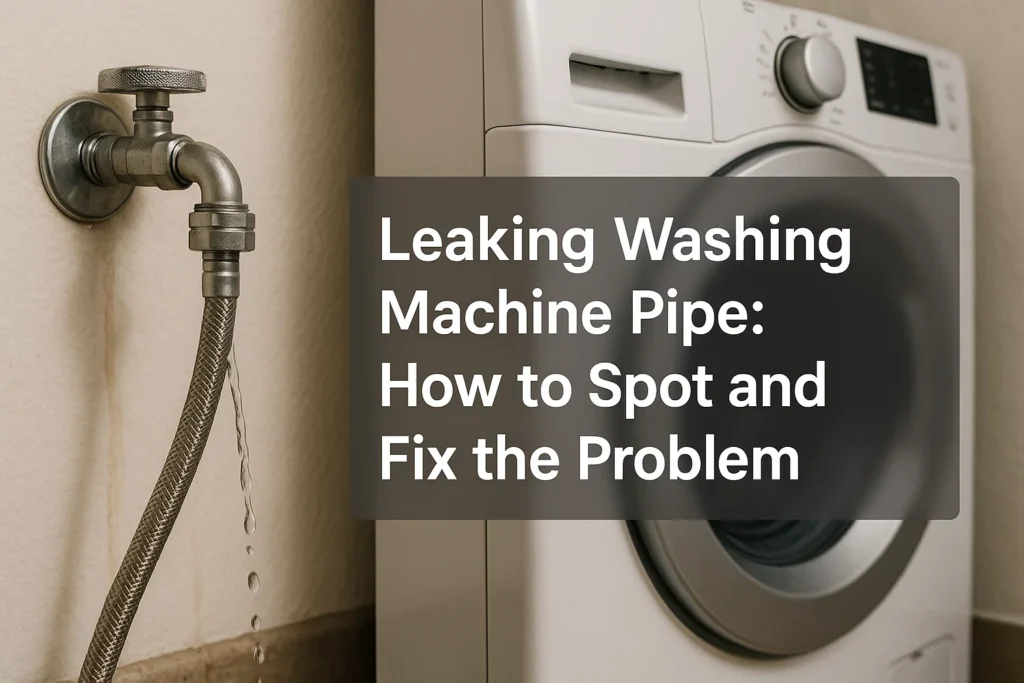A leaking washing machine pipe can quickly escalate from a minor drip to serious water damage. Whether the leak is subtle or obvious, recognizing the signs and acting promptly is crucial. In this article you’ll learn how to diagnose common causes, what to do right away, a detailed repair guide, when to seek expert help, and how to prevent future leaks. If you ever need professional washer repair in New York, you can always turn to the team at Express Repair NY.
Common Causes of a Leaking Washing Machine Pipe
Understanding why your washing machine pipe is leaking helps you pinpoint the problem faster. Some of the most common root causes include:
- Loose or deteriorated hose connections
Over time, vibrations and small movements can loosen clamps or fittings at the hose ends, creating small gaps where water can escape. - Worn-out washers or seals
Rubber washers and seals inside hose couplings degrade due to heat, detergent chemicals, and pressure cycles. When they no longer seal properly, leaks are inevitable. - Damaged hoses or cracks
Hoses may get pinched, rubbed, or develop hairline cracks over years of use, especially if under tension or not routed properly. - Clogged drain or pipes backing up
Lint, fabric fibers, or detergent residue can clog the drain pathway, causing water to overflow and leak out through weak points. - Improper installation or slope
If the drain pipe is not properly angled, or hose runs are too tight or kinked, water may not flow freely and can cause leaks. - Internal component failure
If the tub seal, pump housing, or internal plumbing parts crack or shift, leaks may emerge from under the machine, not just from external hoses.
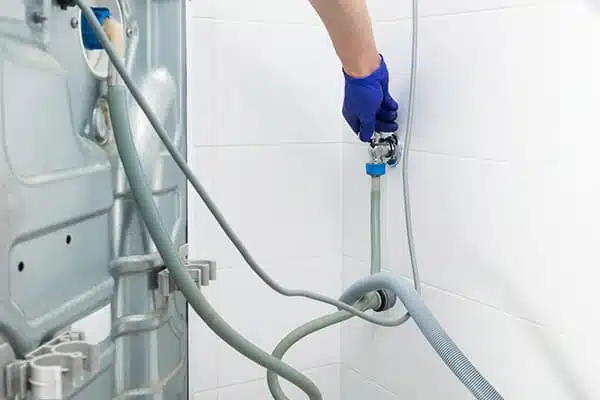
Warning Signs Your Washing Machine Pipe Is Leaking
Here are red flags to watch out for, which often signal that a leak is brewing:
- Puddles or damp spots appear near the back or underneath the washer.
- Unusual dripping or spray during certain cycles (fill, wash, drain).
- Fluctuating water levels or overflow behavior.
- Rust stains, mineral deposits, or corrosion around hose fittings or pipe joints.
- Slight musty odors or mold growth under or behind the appliance.
If you notice any of these, do not delay—intervene before the damage spreads.
What to Do Immediately If You Notice a Leak
When you first spot a leak, follow these steps to minimize damage and prepare for repair:
- Shut off the water supply
Turn off the hot and cold water valves feeding the washer. - Unplug the machine
For safety, disconnect the washing machine from the power source before handling hoses or water. - Contain the leak
Use towels, buckets, or trays to catch dripping water and protect your floor. - Move the washer slightly
Gently pull the washer forward to gain access to the back hoses and fittings. - Inspect quickly
Look for obvious drips, wet hoses, or loose clamps. Sometimes merely tightening a fitting stops the leak. - Avoid running cycles
Don’t turn on the washer again until you’ve addressed the leak, or you risk further damage.
If the leak persists or seems internal, don’t hesitate to call for washer repair in New York — the pros at Express Repair NY are ready to assist.
Step‑by‑Step Guide to Fixing a Leaking Washing Machine Pipe
Here is a thorough DIY procedure you can attempt if you feel comfortable with basic plumbing tasks. If not, skip ahead to the professional section.
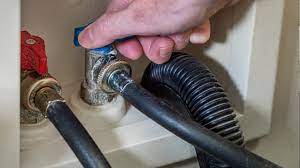
Tools & Materials You’ll Need
- Adjustable wrench or channel-lock pliers
- Replacement hose(s) of correct size
- New rubber washers or gaskets
- Hose clamps (worm-gear type)
- Teflon tape or pipe sealant
- Towels, bucket, flashlight
- Screwdrivers (flat and Phillips)
Repair Steps
- Turn off water and power
Make sure the washer is unplugged and the inlet valves are off. - Remove the suspect hose
Loosen the clamp or nut at both ends and slide off the hose. Catch residual water in the bucket. - Inspect hose and connections
Look inside the hose for cracks or pinholes. Check the coupling ends and fittings for wear, corrosion or old seal remnants. - Replace washers/seals
Insert fresh rubber washers at both ends. If the fittings require gasket seals, apply Teflon tape or pipe compound. - Install the new hose (or reinstall)
Slide the hose carefully into position. Make sure it’s not kinked or twisted. Tighten the clamps snugly—don’t overdo it. - Check the drain path and hose positioning
Ensure the drain hose is properly seated, not kinked, and has a slight downward slope. Also check for blockages in drains or standpipes. - Reconnect water and test
Turn the water back on, plug in the machine, and run a small cycle (rinse or spin). Observe carefully for leaks at the newly connected joints. - Fine‑tune or repeat if needed
If a leak remains, re-tighten clamps, re-examine washers, or consider replacing the hose entirely. If still unsuccessful, the issue may be internal.
If the repair fails or the problem is more complicated, arrange for professional washer pipe leak repair services — and for residents of NYC, you can rely on Express Repair NY’s team.
When to Call a Professional for a Pipe Leak
While many leaks are DIY‑fixable, some scenarios definitely call for a pro:
- The leak comes from inside the washer base rather than an external hose.
- Multiple leaks occur simultaneously or in hard‑to-reach areas.
- The machine is still under warranty and self-repair could void it.
- You’re unsure or uncomfortable handling plumbing tasks.
- Previous fixes haven’t resolved the issue.
In such cases, contact a trusted appliance repair company. For those in New York, you can schedule washer repair in New York via Express Repair NY to get expert help quickly.
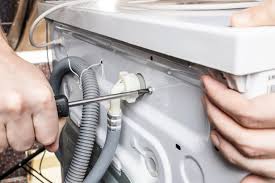
How to Prevent Future Leaks in Washing Machine Pipes
Preventative care can extend the life of your hoses, seals, and washers and keep leaks away:
- Regular inspections: Check hoses, clamps, and seals every 6–12 months for wear, corrosion, or looseness.
- Replace hoses on schedule: Rubber hoses should be replaced every 3–5 years (or sooner if any sign of wear appears).
- Use stainless steel braided hoses: They are more resistant to bursting, punctures, and wear.
- Avoid overloading: Too much laundry stresses connections, causing them to loosen or shift.
- Use proper detergent amounts: Excess suds can force water into places it shouldn’t go.
- Ensure proper hose routing: Avoid kinks, sharp bends, or pinch points.
- Keep drain path clean: Flush drains periodically to prevent buildup of lint or residue.
- Level the washer: An unbalanced machine shakes excessively and loosens fittings over time.
By adopting these habits, you reduce the chance of leaks significantly. And if you ever run into trouble again, consider enlisting a specialist for washer repair in New York — the team at Express Repair NY will be ready to restore your appliance.
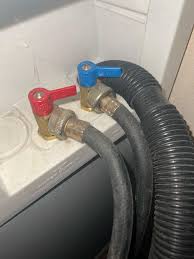
Frequently Asked Questions About Washing Machine Pipe Leaks
Q: Can a leaking hose damage floors or walls?
A: Yes — even a small, slow drip can cause mold, wood rot, and damage over time. It’s best to deal with any leak promptly.
Q: Is it safe to use sealant on a leaking hose connection?
A: You can use Teflon tape or pipe joint compound for threaded connections, but for rubber hose-to-fitting joins, proper washers and clamps are more reliable.
Q: How can I tell if the leak is in the hose or inside the washer?
A: Remove and inspect the hose separately. If the leak persists without the hose, it likely originates from an internal component (pump, tub seal, etc.).
Q: Will shutting the machine off when not in use prevent leaks?
A: It helps prevent pressure-related issues, but aging hoses and seals can still degrade. Routine inspection is still necessary.
Q: What’s the approximate cost for professional repair?
A: It depends on the issue — simple hose replacement might be inexpensive, while internal seal or pump repairs cost more. In New York, you can get estimates and scheduling from specialists offering washer repair in New York like Express Repair NY.
